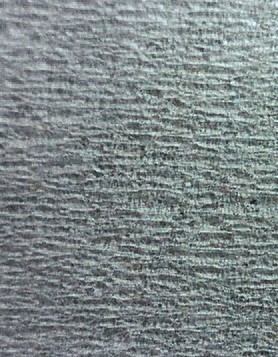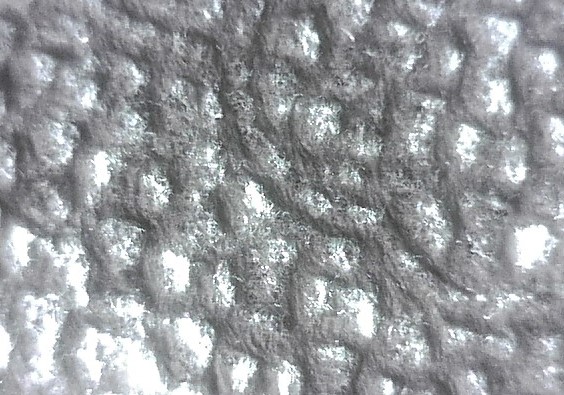What is TAD?
In the tissue industry, TAD is the acronym for Through Air Drying. The TAD process used in tissue manufacturing was developed by P&G, Kimberly-Clark, and Scott. TAD was first used commercially in the 1960’s in the manufacturing of tissue and towel products. Each company had a slightly different process which created an avalanche of patents around the TAD process. In the late 1990’s, these patents began to expire, and two machine makers could supply anyone with a TAD machine. From that point forward, TAD became a popular method to produce retail tissue and towel in North America and to a lesser degree in Europe. Today, the majority of high-end retail bath tissue and towel is manufactured on a TAD machine.
 20 magnification TAD produced bath tissue
20 magnification TAD produced bath tissue 20 x LDC bath tissue
20 x LDC bath tissue
Why was this technology developed and adapted to the tissue industry? It appears that TAD was first used in non-woven and cloth manufacturing to dry the products. These drying methods were adapted to the tissue business. The “standard” method of making tissue and towel at the time of TAD technology development was dry creping. Dry creping of tissue had been used since the World War I era, and, as with most technology, has been developing and evolving as new fibers, chemistries, machinery, metallurgy, clothing, control technology, and markets are discovered.
The bath tissue market in the United States is one of the most discriminating worldwide. Softness, which is tested by hand-feel, is always one of the key attributes influencing consumer preference. Visit a local retailer and look at the selection of bath tissues and towels. There is a variety of brands intended to satisfy all consumer tastes and budgets, but the higher-end or “best” products are generally reflected in the price difference.
What do TAD products bring to the market that the traditional light dry crepe (LDC) was unable to deliver? In comparison to LDC, the TAD produced tissue and towel have twice the bulk and absorption capacity for the same basis weight. These two factors are key to the success of TAD in making high-end retail products. LDC machines can run at very low creping moistures to improve bulk and absorption, but at the relatively low moisture used in TAD production, the LDC machine would be at constant risk of fire.
High bulk means the softness is also significantly superior. TAD uses only virgin fibers and no recycled fibers in its furnish. For the “ultra” premium brands, a high portion of eucalyptus is included. Eucalyptus fibers are short, fine fibers that develop a soft sheet when properly prepared.
How does the TAD process deliver such a step change improvement in bulk and other functional properties? The TAD process develops functional properties by molding the fiber mat into a structured fabric (TAD fabric). The resulting structured tissue product will have higher bulk and absorption due to air passing through the sheet forming a more porous sheet. With the lack of wet pressing, very low refining levels and minimal creping, a lightweight, high-bulk sheet is formed. Since TAD products have higher bulk than LDC, it can deliver the sheet count, roll sizes, and performance with substantially less basis weight. Basis weight savings is a major benefit for tissue makers using a TAD process.
TAD products are dependent on the TAD fabric design and fiber type for performance. The LDC is dependent on creping and fibers for bulk and absorption characteristics. TAD does use significantly higher amounts of Yankee attachment chemistry, a much higher usage of natural gas for drying the sheet before the Yankee dryer, and significantly lower amounts of steam. The TAD machine cannot run as fast as a finely tuned LDC machine. TAD is limited in speed by the air temperature in the TAD section. Temperatures over 500°F will cause odor issues in the finished sheet. If wet strength grades are being manufactured, the odor is quite obvious. The majority of the sheet drying in a TAD process is in the TAD unit operation. The Yankee dryer is a minor component of sheet drying for the TAD process.
Add up all the factors and TAD produced tissue products are the market leaders due to performance and consumer preference. The TAD market continues to expand as North American consumers demand increased softness and absorbency.